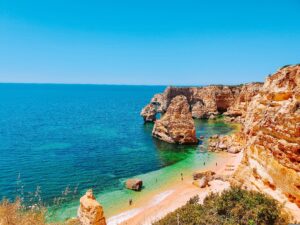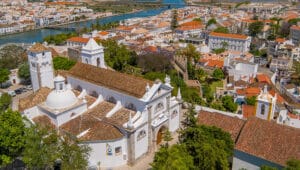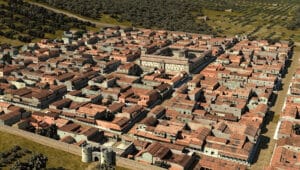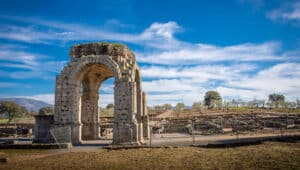For five centuries, the islands of the Azorean archipelago have provided a safe haven for seafarers due to their location as an Atlantic crossroads between the Americas, Africa and Europe.
From May 1919, this extended to air travel when three US Navy Curtiss flying boats used the harbour of Horta, on the island of Faial, as a stopover on their first successful flight to Britain.
Later, Pan-Am started the first scheduled commercial flights to Europe using the Sikorsky clipper S-40 flying boats.
In 1939, Hitler included in his battle plans a provision for the forced occupation of the Atlantic islands of Madeira, the Canaries and the Azores to provide bases for part of his grand force of nearly 800 U-boats and support aircraft of the Luftwaffe.
To counter this, the British and US governments each prepared plans which would enable possession by force if a leasing arrangement could not be agreed. These intentions became known to Dr António Salazar who determined to preserve the declared neutrality of Portugal by walking a political tightrope between the opposing sides; despite the support given by most of his ministers and generals to fascism as being a bulwark against communism.
Lisbon became the archetypal city of spies as German and British diplomats and secret agents converged in their subterfuge for the key projects: (1) obtaining the exclusive control of exported wolfram (a metal vital to for the construction of war machines) and (2) facilitating the use of Portuguese ports and airfields for the victualling of warships and airplanes.
Chaos ensued with Germany being successful in obtaining export licences for transporting wolfram by train and truck through Spain and Vichy France to the Ruhr and taking complete command of the “Azorean Gap” in the north Atlantic Ocean which led to the sinking of more than 1,000 merchant ships of many nations.
During 1940, the Nazi Axis was seen to be indomitable in its expansion of “Fortress Europe” and the probability of Spain becoming its ally with the consequent annexation of Portugal became ever stronger.
In 1940, the Portuguese Navy asserted its authority in the Azores by establishing a permanent base in Ponta Delgada, followed in early 1941 by a concentration of naval and armed force in preparation for a possible transfer of government from Lisbon.
This included the extension of the runway at Lajes to accommodate squadrons of Gloster Gladiator fighter biplanes and the versatile Junkers Ju52 transport aircraft which could be adapted as a light bomber to carry four depth charges.
However, pressures in the Atlantic theatre of warfare were relieved in June of 1941 when German troops began their ill-fated invasion of the Soviet Union. Spectacular early victories were only achieved by draining the Nazi war machine of both the raw materials essential for the production of weaponry and reinforcements of battle-hardened troops.
At the Allied Atlantic Conference held in August 1941, President Roosevelt had revived his intention of seizing the archipelago, but this was put on hold until May 1942 when he and British PM Winston Churchill hatched War Plan Gray by which the Allies would achieve their aim to end the U-boat menace by more forceful means.
But Churchill’s cabled instructions to proceed with an invasion were met with strong opposition from both the war cabinet and the mandarins of the civil service in London. Instead, diplomacy exercised by the British ambassador, Sir Ronald Campbell, persuaded the Salazar regime to accept an immediate Allied occupation as being in accord with the ancient Treaty of Windsor.
There followed a surge in the activity which included the extension of the runway at Lajes multi-use airfield on Terceira Island and the building of an infrastructure which could support the transport of personnel by heavy aircraft.
Within one year, British and American forces were in complete military control of Air Base Nº4 and had reached a signed agreement whereby the USAAF and USN would largely be responsible for the ferrying of aircraft and troops to Europe and would join with RAF Coastal Command in the hunting and sinking of U-boats. In this, they were assisted to good effect by Goodyear non-rigid K-airships (blimps) equipped with the novel magnetic anomaly detection devices.
At the end of WW2, the base was officially returned by the British to Portugal, but the US had already negotiated in November 1944 a Treaty for the continuation of its occupation of Lajes and this permanence has continued until the present day bringing with it immense changes to the local economy and culture.
Interestingly, the USA has never paid a rent; its tenure being regarded as a Portuguese contribution to the costs of NATO.
|| features@portugalresident.com
Roberto Cavaleiro first came to Portugal in 1982, acting as advisor to international investors. Current interests include animal welfare and writing opinion articles, especially with reference to environmental issues.
Also read: Azores “critically important” to NATO – US ambassador

























